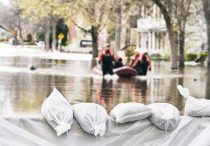
Safety First: Disaster Preparedness for Families of Children with Autism
As a parent, how should you approach disaster preparedness if one or more of your children is on the autism spectrum?
A quick review of recent headlines underscores the importance of developing a comprehensive family emergency plan. From floods and hurricanes to tornadoes and wildfires, catastrophic events often occur with little warning and require quick, decisive action. Taking a wait-and-see approach to disaster preparedness is never advisable. As the adage warns, “Failing to plan is planning to fail.” This is especially true for families of kids with autism.
While anyone facing an emergency situation shares the basic needs for food, water, and shelter, ASD families must also address specific challenges associated with caring for and protecting children on the spectrum.
How to Approach Disaster Preparedness for Children on the Spectrum If you’re the parent of a child with autism, thinking about preparing your family for an emergency situation may feel daunting. What if it’s a lights out situation and your child has a tremendous fear of the dark? Or, what if you lose the ability to obtain or prepare food for a couple days, and your child has severe food sensitivities? How will you balance meeting the needs of your child on the spectrum while keeping your entire family safe—especially if you have just moments to respond?
We understand that it can feel overwhelming, but breaking the challenge into small, easily doable steps will make the process feel easier. First, remember that all of the general principles behind home safety, holiday safety, and travel safety for children with autism still apply in an emergency situation. Plan for comfort and quick, easy communication for all members of your family. Keeping routine and comfort in mind as much as possible for your child with autism will help you avoid meltdowns and other delays in case of a disaster.
Special Needs Require Specific Disaster Planning
When it comes to creating a solid disaster plan for your family, knowing what kind of disaster could impact your area is key. Creating a plan that would allow you to survive on your own for at least three days is crucial—so begin by creating an emergency kit for every member of your family. For advice on general preparedness, visit Ready.gov. This site also has wonderful suggestions for creating 72-Hour Survival Bags for Children with Autism.
As you consider how to best address the needs of a child or adult with Autism, focusing on these three areas can increase your chances of successfully navigating an emergency:
- Identification
In a crisis situation, clear communication matters. However, the uncertainty and heightened sensory input of a disaster can make it extremely difficult for a child with autism to identify themselves to anyone offering assistance. Having a medical ID bracelet or a laminated ID card can save valuable time and help avoid needless frustration. Storing important personal and medical data in a smartphone is also a quick and easy way to ensure the most important information is available in an emergency. Options are available on iPhone and Android platforms.
- Medication
Since most medications are regulated by prescriptions, it is essential to discuss an emergency plan with your child’s physician. It will be important to know how to get an emergency supply of essential medicines before the need actually arises. If the disaster requires evacuation, be sure to locate and contact a pharmacy near your destination as soon as possible to advise them of your situation. To aid any medical personnel or first responders, be sure to list all medications on the medical ID options listed above.
- Separation
If your family member with autism tends to run away or wander, the chances of this happening while you’re distracted with emergency preparations increases. Establishing a support network of nearby friends and family can help reduce the time your loved one is at risk. It’s also a good idea to participate in a local Search and Rescue drill with your child before an emergency occurs. To streamline communication among your helpers, Autism Speaks has developed a Family Wandering Emergency Plan that can be shared with everyone in your network.
For a more detailed list of disaster preparation tips, review FEMA’s “Preparing for Disaster for People with Disabilities and other Special Needs” report.
At Springbrook, we’re deeply committed to keeping children in the autism community safe and protected during emergencies. To sign up for our next Search & Rescue Training Day event or to find out more about our programs for children with autism, call us at (864) 843-8031.